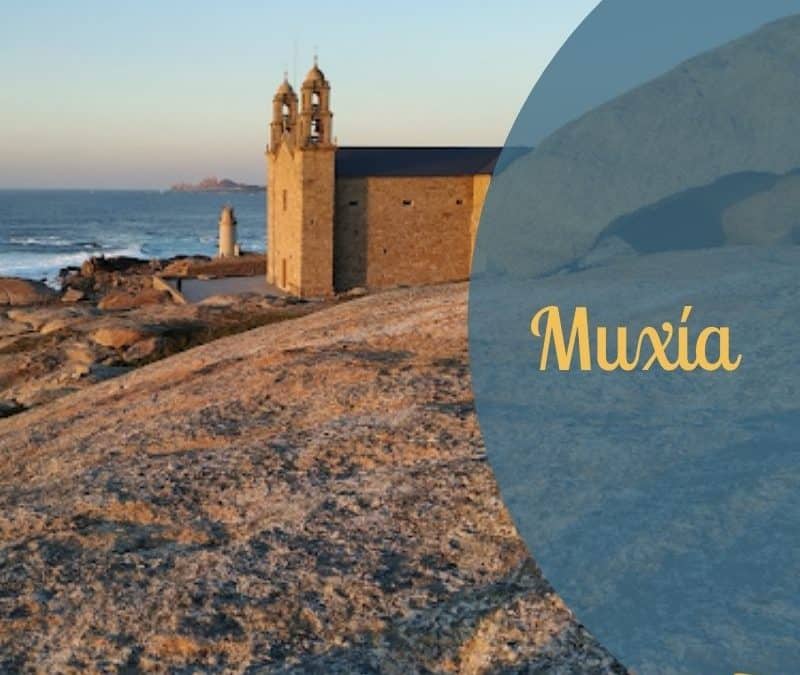After making it to Santiago de Compostela, many pilgrims decide to continue on to the sea, to reflect, and to truly finish their Camino.
Fisterra, the ‘end of the world’ is a popular destination. But there’s another powerful and mystical place a little further north: Muxía, a coastal town steeped in legend and natural beauty.
Some, of course, go to both places. They’re both close to 90km from Santiago, and they both have a connection to the Camino.
Where is Muxía?
Like Fisterra, Muxía is located on Galicia’s rugged Costa da Morte (Coast of Death).
Both towns sit roughly 90 km from Santiago de Compostela, and both form part of the Camino de Fisterra-Muxía, a route that many pilgrims follow after completing the main Camino de Santiago.
Though less visited than Fisterra, Muxía holds deep spiritual significance and offers a unique experience to those who journey there.
Muxía and the Camino
This little fishing town, located on the coast of Galicia, is considered one of the last stops of the Camino de Santiago. But in order to understand how this small remote village became an essential part of the Camino, we must dive into history.
The history of Muxía is ancient. Megalithic monuments like the Dolmen de Dombate reveal that the area has been spiritually significant since prehistoric times. In fact, in this corner of Galicia, stones were always sacred. They marked holy sites, were believed to possess healing powers, and served as bridges between the human and the divine.
These beliefs endured and eventually merged with Christian tradition.
According to local legend, Saint James was preaching along the Galician coast, struggling to inspire converts. In a moment of despair, he knelt in prayer near the rocky shore of what is now Muxía. There, the Virgin Mary appeared to him. She arrived on a boat made entirely of stone to offer encouragement.
After she vanished, the stone boat remained, and its pieces can still be seen today near the Santuario da Virxe da Barca (Sanctuary of the Virgin of the Boat).
These stones are known by their Galician name:
Pedra de Abalar (rocking stone) would have been the boat. This massive slab used to move (hence the name) and through the centuries it has been used for divination, healing, and fertility rituals.
Pedra dos Cadrís – This would have been the sail of the boat. It is said to have healing powers. They say that if you go under it 9 times, back pain, headaches and kidney problems will be cured.
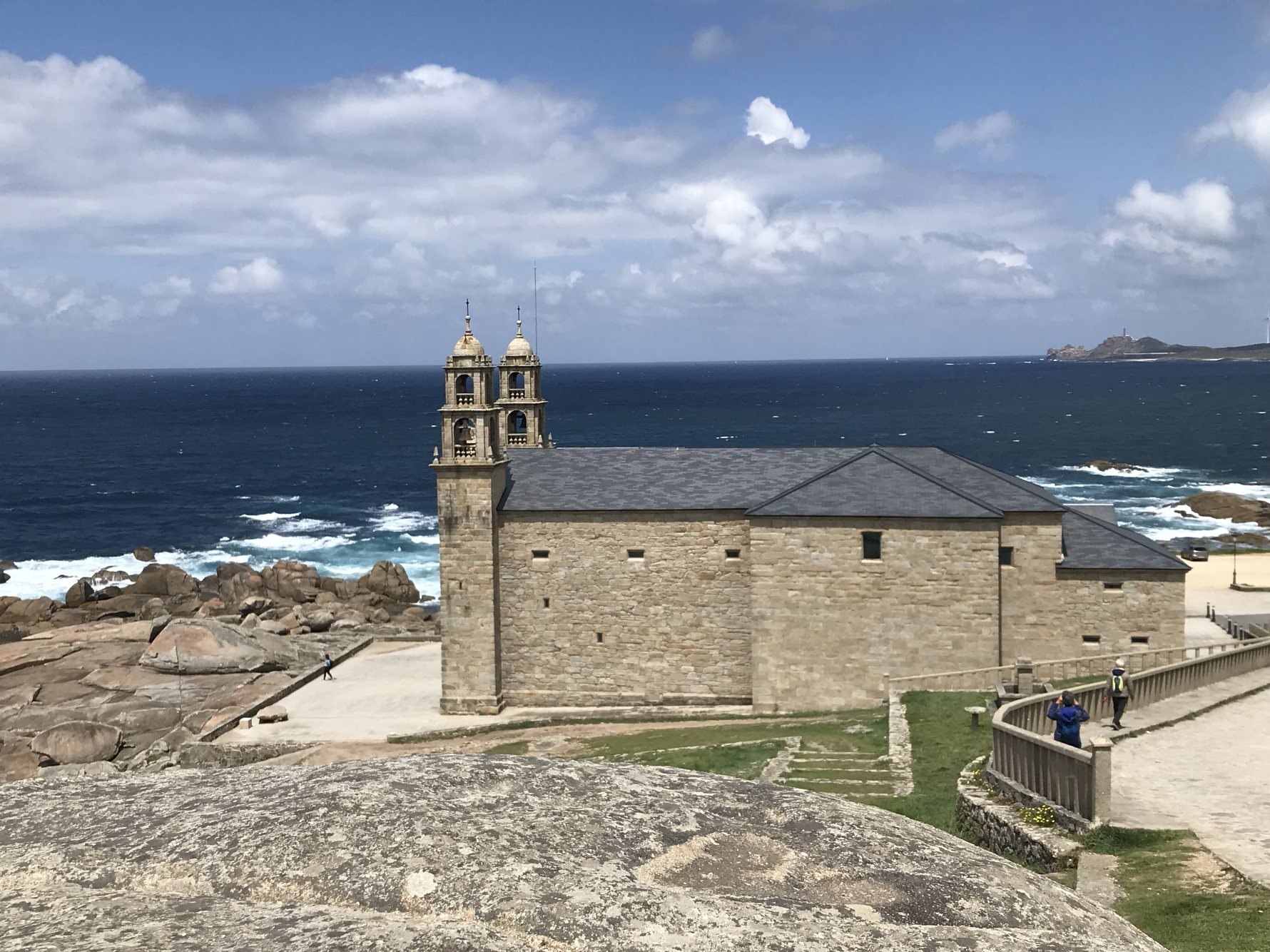
Church of the Virgen de la Barca.
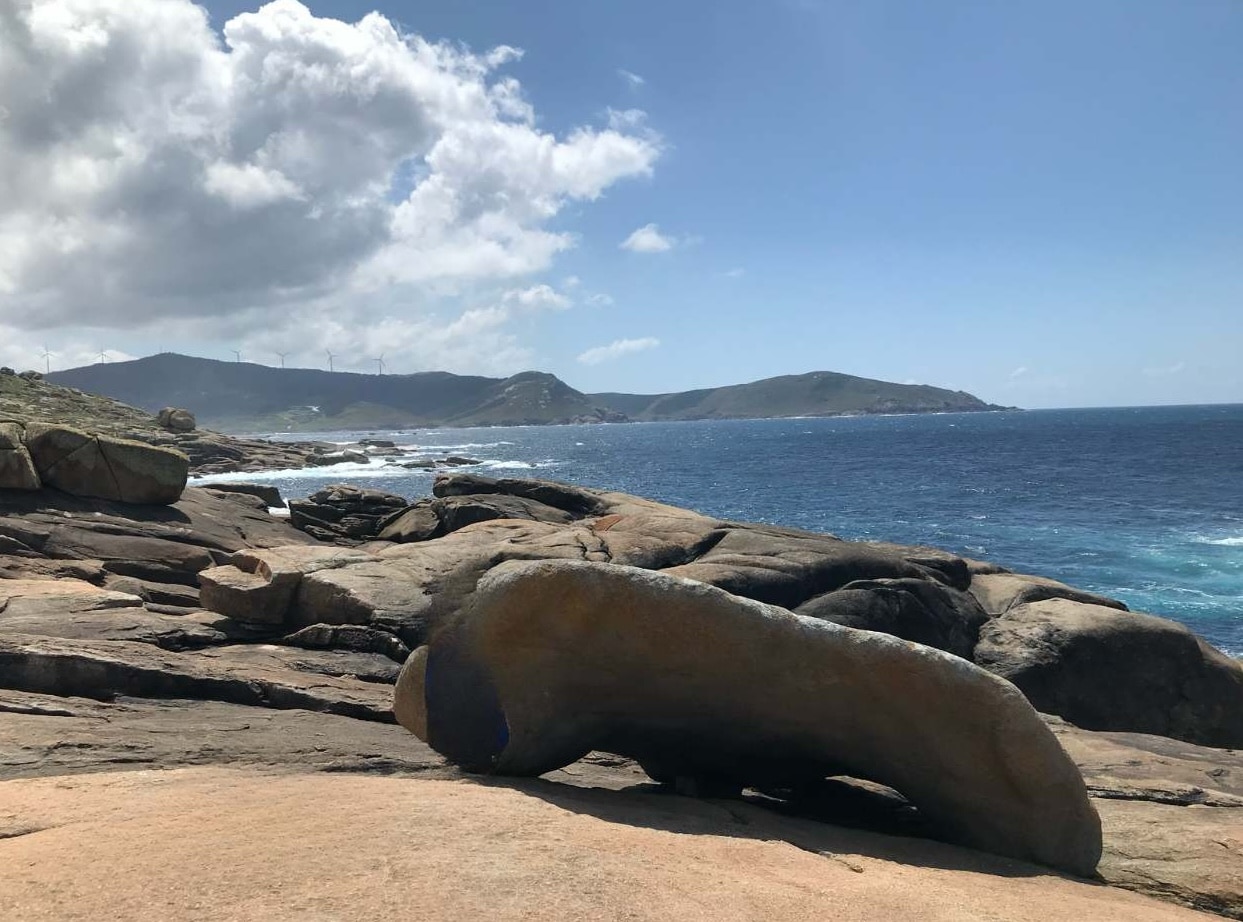
Pedra dos cadrís.
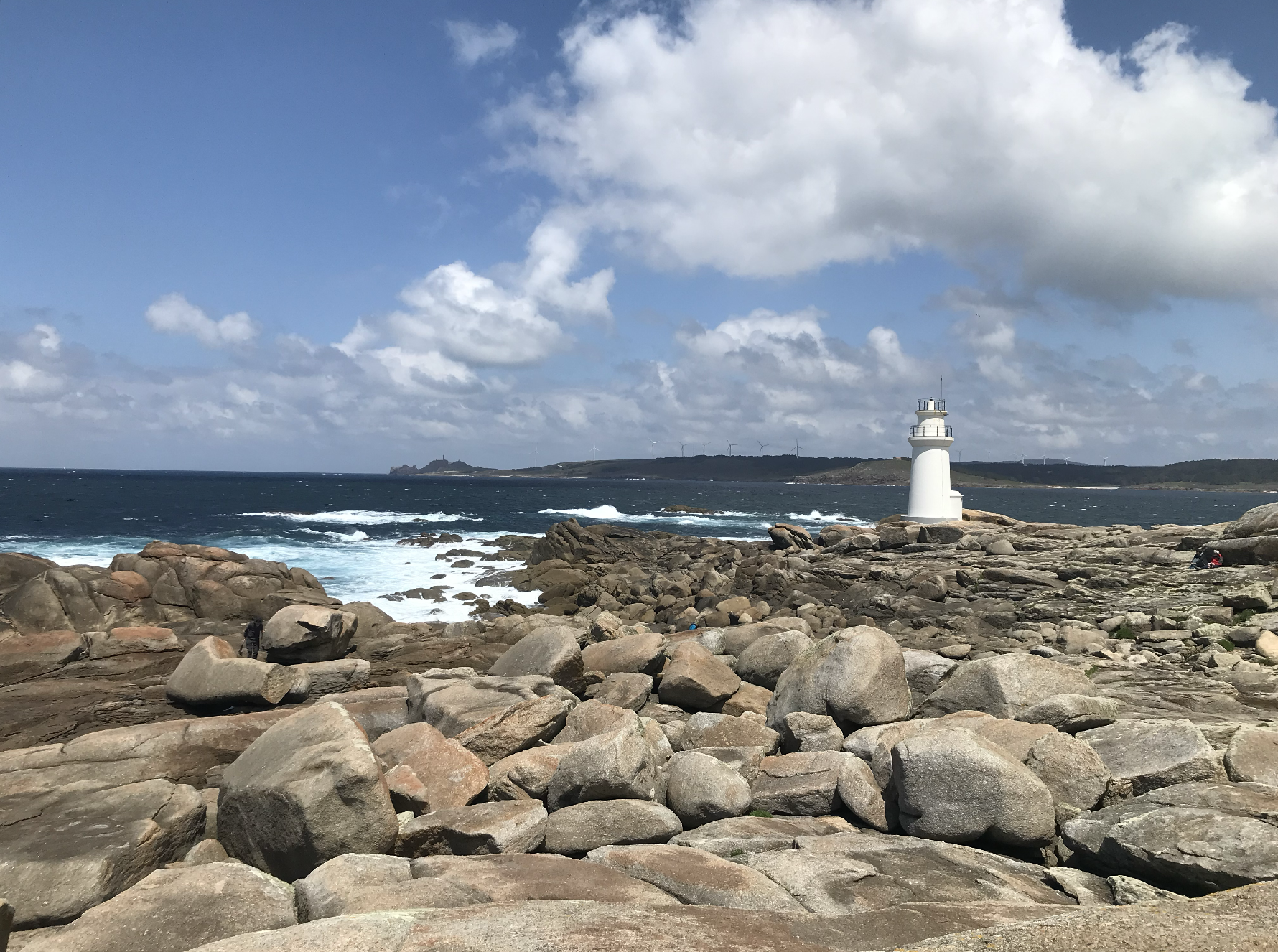
Why End Your Camino in Muxía?
Many pilgrims choose to walk from Santiago to Muxía as part of their spiritual journey’s conclusion.
Some pilgrims walk to Fisterra first, then continue to Muxía. Others go to Muxía first. Either way, it’s a powerful way to close the Camino.
The walk to Muxía is around 90 km and typically takes 3-4 days, longer if you go to Fisterra first. The route is well marked and offers breathtaking coastal views, peaceful forests, and small villages along the way.
Ending your pilgrimage in Muxía is more than just reaching another town—it’s a journey through layers of history, legend, and personal reflection. So, as you plan your Camino, ask yourself:
Where do you want to end your Camino de Santiago?
Basic Spanish for the Camino
*pedra dos Cadrís: ‘pedra’ is the Galician word for stone (piedra in Spanish). Cadrís is also a Galician word and it means hips.
Abalar is another Galician word. It means to rock or swing.
For the pronunciation of Fisterra and costa da Morte, check this post.
Muxía
Dolmen de Dombate
Santuario de la Virgen de la Barca
Piedras
Pedra dos Cadrís
Pedra de Abalar
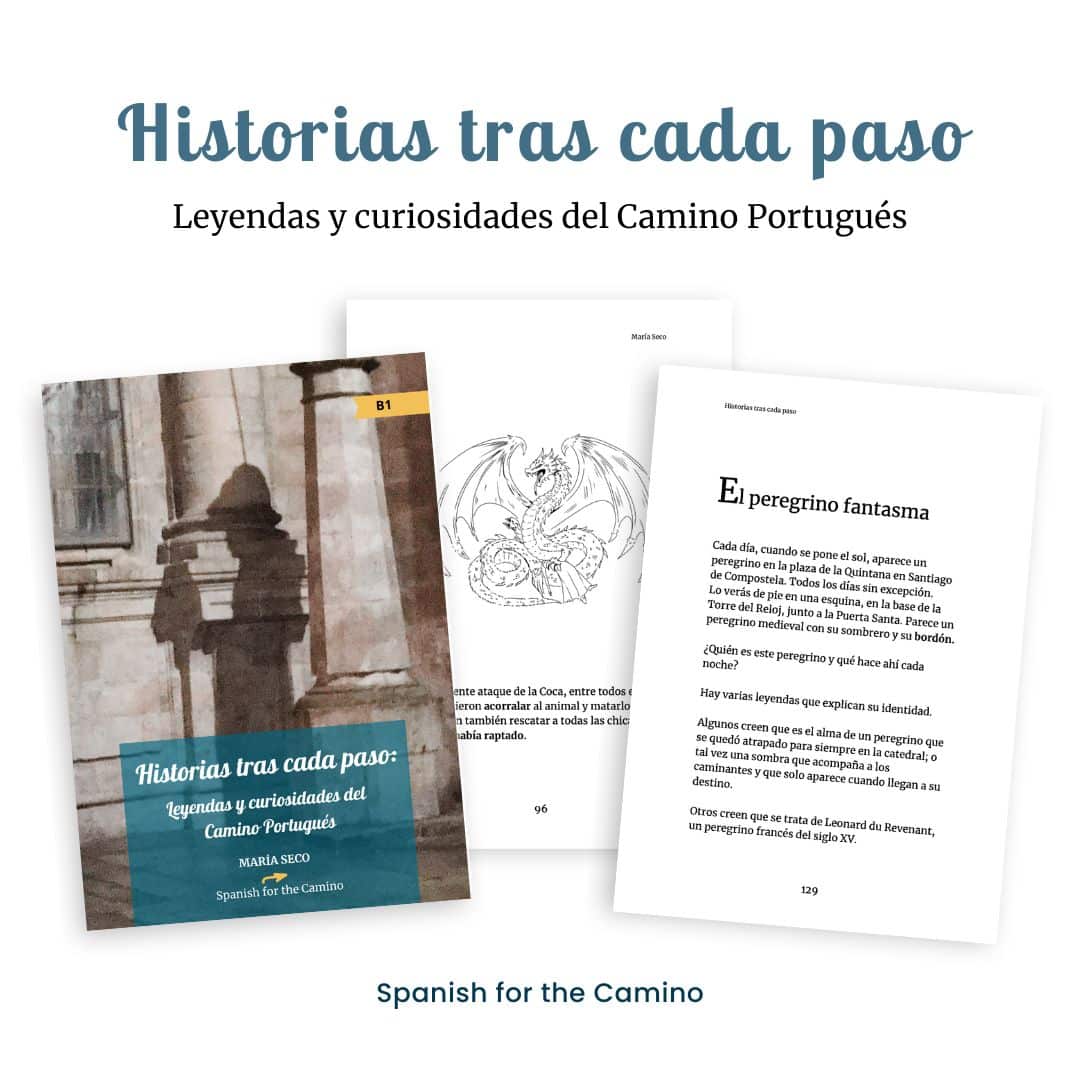
Want more?
Make sure you don’t miss any posts or announcements by subscribing for free here. You’ll receive a free Camino food guide. And… you’ll get access to exclusive content too.

